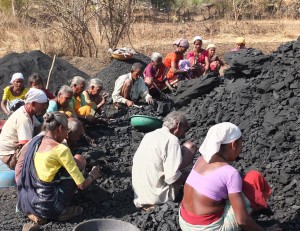This post was contributed by Dr Penny Vera-Sanso, Lecturer in Development Studies in Birkbeck’s Department of Geography, Environment and Development Studies and V. Suresh of the Centre for Law, Policy, and Human Rights Studies, Chennai, India
In just three weeks the Photo Competition on the ‘Working Elderly’ became a people’s research project, revealing the widespread and diverse nature of older people’s work. With nearly 3,000 pictures up-loaded it is a permanent on-line record of older people’s work from across India’s mountains, plains, deserts, coasts, villages, towns and cities – an irrefutable documentation of what older people do and how they contribute to the economy, both locally and nationally.
So far these pictures have drawn over 25,000 votes from thousands of visitors to the website and provide no hiding place for so many stereotypes of old age. Casual reference to ‘old age dependency’, ‘old age burden’, ‘people of working age’ as aged 15-59 years and the unthinking denigration of older people’s work as ‘passing time’, ‘helping out’ or ‘just…’ are now revealed to be more fiction than fact.
The photos show a huge range of work and could even be used as lessons in ‘how things are made’. The old woman picking cotton buds or cutting cane for brooms, the old cobbler sewing seals for large drains, the old rickshaw puller moving two-wheeler tyres from the manufacturer to the mechanic, the old man breaking and clearing ground for construction, the old gang-men who ensure that one of the world’s largest employers, India Railway, operates safely. The list is endless. And the conditions of work are diverse – too diverse to describe here.
Yet despite the diversity depicted this isn’t the whole story. Most pictures have been taken of people as they work in public view and during the hours of the day the general population are awake.
However, our research (2007-10, 2012-3) reveals that in the middle of the night the elderly are working. To our surprise we found that long before younger hawkers arrive on the first bus elderly wholesalers, porters, hawkers and rickshaw pullers are working these markets in order that everyday necessities are available in every neighbourhood at the start of the day. We also found that the elderly sell tea and hot food to late night workers and suspect that older people are working at many other things while the nation sleeps.
Our research also revealed that many elderly people work in hospitals, schools, banks, factories, restaurants and offices as cleaners, porters, security, peons, ayyas, gardeners and in many other roles, yet they have not appeared in the photo entries so far.
What are the policy implications of such widespread working of elderly people? First, that the working elderly are doing vital work for the country and family. This work needs to be recognised for what it is and fostered. Second, the vast majority of elderly workers clearly live precarious lives in or on the edge of extreme poverty and many are doing work that eats into body and soul. What elderly workers need is a meaningful pension that will enable them to choose whether and how much to work and will empower them to refuse the most onerous and demeaning work.
Photos can be seen at www.thehindushutterbug.com. Voting closes 28 July.



